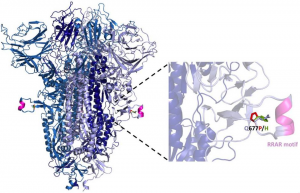On a blog article posted on Feb. 19th, 2021, it was reported that new variants (Q677H, Q677P) are increasing from the end of the last year in North America.
A group from Univ. of Bern, etc. has reported on the effect of Q677 variants on SARS-CoV-2 infectivity with using a SWISS MODEL.
https://www.ncbi.nlm.nih.gov/pmc/articles/PMC7885944/
The S1/S2 cleavage site contains the multibasic cleavage site (RRAR Motif). Although the position 677 is outside the polybasic site (furin binding pocket), the presence of a proline at this site may introduce a favorable kink that promotes the dynamic conformational changes necessary for cleavage at the S1/S2 junction, which is governed not only by furin-like activities, but also by trypsin-like proteases (e.g., TMPRSS2) and cathepsins. Moreover, the introduction of a proline in this model appears to be 3.7 angstroms away from the carbon backbone of S689 (relative to 4.9 angstroms for the native glutamine), which may promote atomic interactions that encourage conformations favorable for proteolytic cleavage. In the case of the S:Q677H substitution, histidine protonation could similarly act as a conformational switch affecting accessibility to proteases. These conformational changes may accelerate virus infection.

